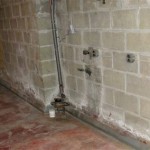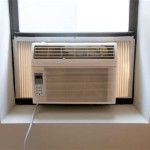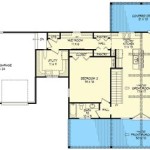How Much to Add an Egress Window to Your Basement
Egress windows are crucial safety features in basements that serve as habitable spaces. They provide a means of escape in the event of a fire or other emergency, and they also allow natural light and ventilation into what can often be a dark and stuffy environment. Determining the cost of installing an egress window involves several factors, each of which contributes differently to the overall expense. Understanding these factors is essential for budgeting and planning a basement renovation project that includes egress window installation.
The overall cost of adding an egress window to a basement can range significantly. Most homeowners can expect to pay anywhere from $2,500 to $7,000 or more per window. This price range is broad because it encompasses different window sizes, types, the complexity of the installation (particularly concerning foundation work), and regional variations in labor costs. The following sections will provide a deeper dive into the components that contribute to the final price tag.
Factors Affecting Egress Window Installation Costs
Multiple components contribute to the final cost of adding an egress window to a basement. These encompass the type of window selected, the complexity of excavation, potential structural modifications, and necessary permits. Each of these aspects can increase the total expenditure significantly.
Window Type and Size: The type of egress window chosen directly impacts the cost. Common types include sliding windows, casement windows, and awning windows. Sliding windows are typically more affordable than casement windows, which, in turn, are generally less expensive than awning windows. The size of the window is also a significant factor. Egress windows must meet specific minimum size requirements according to building codes, usually dictating a minimum openable area, width, and height. Larger windows naturally cost more due to increased material usage and more extensive installation requirements. Expect to pay more for custom sizes or specialized features like tempered glass or energy-efficient coatings.
Excavation and Foundation Work: One of the most significant cost drivers is the excavation required to create the window well. This involves digging around the foundation to create space for the window and its well. The depth and width of the excavation depend on the window size and the depth of the basement below grade. The type of soil also plays a role. Sandy soil is easier to excavate than clay or rocky soil, which may require specialized equipment and more labor. After excavation, a window well needs to be installed to prevent soil from collapsing and to allow for proper drainage. Window wells are typically made of corrugated steel, concrete, or plastic and come in various sizes and prices. Addressing the foundation wall itself can also contribute to the cost. Cutting through the foundation requires specialized tools and expertise. If the foundation is made of concrete blocks rather than poured concrete, additional reinforcement might be needed to maintain structural integrity. In older homes, where the foundation might be weakened or deteriorated, further repairs may be necessary before installing the window.
Window Well and Drainage Systems: The window well is a crucial component of an egress window installation, and its cost should be factored into the overall budget. The price of the window well depends on its material, size, and depth. Corrugated steel is generally the most affordable option, while concrete or plastic wells can be more expensive but offer greater durability and aesthetics. Proper drainage is essential to prevent water from accumulating in the window well and potentially leaking into the basement. This typically involves installing a drainage system that connects to the home's foundation drainage or a separate sump pump system. The cost of the drainage system depends on the complexity of the installation and the existing drainage infrastructure. Some installations may require a significant overhaul of the existing drainage to accommodate the new window.
Interior Finishing and Framing: After the egress window is installed, interior finishing is needed to integrate it seamlessly into the basement space. This includes framing the window opening, insulating around the window to prevent drafts and moisture, and installing drywall or other wall finishes. The cost of the interior finishing depends on the quality of the materials used and the complexity of the design. A simple drywall finish is generally more affordable than a more elaborate trim package. Additionally, the framing around the window must be structurally sound and properly sealed to prevent air and water leaks.
Permits and Inspections: Obtaining the necessary permits and inspections is a crucial and often overlooked aspect of egress window installation. Building permits are required to ensure that the installation complies with local building codes and safety regulations. The cost of permits varies depending on the municipality, but it can range from a few hundred to several hundred dollars. Inspections are also required at various stages of the installation to verify that the work is being done correctly and that the window meets all safety requirements. Failing to obtain the necessary permits can result in fines and delays, and it could even require the removal and reinstallation of the window. Therefore, it is essential to factor in the cost of permits and inspections when budgeting for an egress window installation.
Breaking Down the Cost Components
To better understand the overall cost, it's helpful to break down the individual components and estimate their respective contributions. This allows for a more precise budgeting process and provides a clearer picture of where the money is being spent.
Window and Window Well Materials: The cost of the egress window itself and the window well typically accounts for a significant portion of the overall expense. Basic egress windows can range from $500 to $1,500, while higher-end models with energy-efficient features or custom sizes can cost $2,000 or more. Window wells can range from $200 to $800 depending on the material and size. Combined, these materials can easily represent 25% to 40% of the total project cost.
Excavation and Foundation Cutting: Excavation and foundation cutting are labor-intensive tasks that require specialized equipment and expertise. Excavation costs can range from $500 to $1,500, depending on the depth of the excavation, the type of soil, and the accessibility of the site. Foundation cutting can cost $500 to $1,000 or more, depending on the thickness of the foundation and the type of material. This portion of the project can represent another 20% to 30% of the total cost.
Drainage and Interior Finishing: Drainage installation can cost $300 to $800, depending on the complexity of the system. Interior finishing, including framing, insulation, and drywall, can range from $500 to $1,000 or more, depending on the quality of the materials and the level of detail. These finishing touches are necessary to make the window functional and aesthetically pleasing, contributing approximately 15% to 25% of the overall cost.
Labor Costs: Labor costs are a significant portion of the overall expense. Hiring a qualified contractor to install an egress window involves several different tradespeople, including excavators, concrete cutters, carpenters, and drywall installers. Labor costs can vary depending on the region and the contractor's experience. Expect to pay anywhere from $50 to $150 per hour for skilled labor. The labor component can represent 30% to 50% of the total project cost.
Ways to Potentially Reduce Egress Window Installation Costs
While egress window installation can be a significant investment, there are several strategies to potentially reduce the overall cost without compromising safety or quality.
Obtain Multiple Quotes: Getting quotes from multiple contractors is crucial for ensuring that you are getting a fair price. Compare the bids carefully, paying attention to the scope of work included and the materials being used. Don't automatically choose the lowest bid, as it may indicate lower quality materials or less experienced labor. Instead, focus on finding a contractor who offers a competitive price with a clear and detailed plan.
Consider DIY Options (With Caution): While some homeowners may be tempted to tackle the installation themselves to save on labor costs, it is generally not recommended unless you have significant experience in construction and a thorough understanding of building codes. Egress window installation involves complex tasks such as excavation, foundation cutting, and structural reinforcement, which can be dangerous and require specialized tools. Improper installation can compromise the safety and integrity of your home, leading to costly repairs in the future. However, some homeowners may choose to handle certain aspects of the project, such as interior finishing, to save on labor costs. If you choose to do any DIY work, make sure you have the necessary skills and knowledge, and always comply with local building codes.
Choose Standard Sizes and Materials: Opting for standard-sized windows and readily available materials can help reduce costs. Custom sizes and specialized materials often come with a premium price tag. Choosing a standard-sized egress window and a typical window well material, such as corrugated steel, can significantly lower the overall expense. Explore different material options, weighing the pros and cons of each in terms of cost, durability, and aesthetics. A careful selection of materials can help strike a balance between affordability and quality.
Plan the Project During Off-Peak Seasons: Construction projects tend to be more expensive during peak seasons, such as the spring and summer, when contractors are in high demand. Consider planning your egress window installation during the off-peak seasons, such as the fall or winter, when contractors may be more willing to offer discounts to secure work. This can potentially save you money on both labor and materials.
Adding an egress window to a basement is an important investment that enhances safety, increases property value, and improves the overall living environment. By carefully considering the various cost factors, obtaining multiple quotes, and exploring potential cost-saving strategies, homeowners can effectively budget and plan their egress window installation project.

How Much Does An Egress Windows Cost To Install In 2024 Forbes Home

How To Install A Basement Egress Window Acculevel

Basement Egress Window Cost And Installing An

How Much Do Egress Windows Cost Peak

How Much Value Does An Egress Window Add Home Inspection Geeks

Egress Window Cost Buying Guide Modernize 2024

Pros And Cons Of Egress Windows News Events For Thrasher Foundation Repair

How Much Value Does An Egress Window Add Home Inspection Geeks

Fixr Com Cost To Install An Egress Window

Basement Egress Window Cost And Installing An
Related Posts







